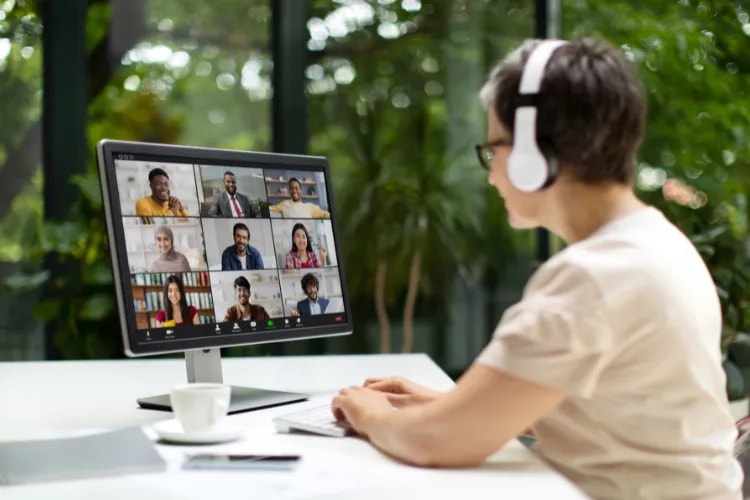
growth
Live events are back in force—and getting smarter. Audiences want connection, learning, and experiences that feel worth the trip, while organizers are balancing rising costs, evolving privacy rules, and a flood of new tech. The good news: demand and investment are strong, giving event leaders a real runway to grow.
Industry forecasts point to sustained momentum through 2026. PwC’s latest outlook anticipates entertainment and media revenues hitting $3.5T by 2029, with non-digital categories like live events leading consumer spend. And major venue operators continuing to invest signals confidence in the in-person experience. Translation: your audience is ready—if you deliver.
This guide distills the Top Strategies To Grow & Scale Your Events in 2026 into practical plays you can execute now: data-powered personalization, hybrid models that expand reach without sacrificing depth, interactive tech that builds community, sustainability embedded into operations, and AI/automation that improves outcomes—not just optics.
Use these strategies to build a 2026 plan that’s data-smart, human-centered, and operationally disciplined.
If growth is your goal, first-party event data is your most durable asset. Done right, analytics reveals what your audience cares about, the channels that convert, and the content that creates “I’ll be back” moments. Done wrong, data turns into noise—and personalization becomes creepy instead of helpful.
Collect consented, high-signal data across the journey and unify it into a single profile. Focus on:
Registration: company, role, industry, goals, accessibility needs, dietary preferences, session interests.
Pre-event behavior: email clicks, site content viewed, agenda builder selections, waitlist behavior, seat/map choices.
Onsite/virtual interactions: check-in times, session scans/views, expo visits, questions asked, polls answered, networking matches.
Post-event signals: survey ratings, NPS, session replays, content downloads, demo requests, renewal or repeat registration.
Use an analytics stack anchored by GA4’s event-based model and a customer data platform (CDP) or unified data layer. With GA4, instrument key events (e.g., agenda_add, ticket_purchase, session_view) and capture attributes via custom dimensions (job function, account tier, product interest). Pair this with a consent framework that honors opt-outs across channels.
Define your measurement plan: map KPIs to events. Examples: ticket_purchase (revenue), session_book (engagement), sponsor_lead (pipeline), check_in (attendance quality), replay_view (post-event reach).
Set up event parameters: attach context like session_id, track_id, pass_type, and content_theme to each relevant event.
Use custom dimensions: capture attendee role, account type, or interest cluster so you can segment by persona, not just by channel.
Connect GA4 to your marketing tools: stream audiences to email, ads, or your event platform for activation.
Data only matters if it changes behavior. Use insights to tailor content and offers that help attendees accomplish their goals.
Content paths: If product managers gravitate to hands-on labs, add a “Lab Track” email route and onsite wayfinding that fast-tracks them to those sessions.
Offer sequencing: If a registrant views premium workshops twice but hasn’t bought, trigger a one-time loyalty code or bundle with VIP networking.
Sponsor ROI: Route qualified buyers to relevant booths via matchmaking and nudge reminders when those buyers are nearby.
Email is still your highest-converting personalization canvas—especially when powered by rich segments. For deep tactics that pair with your data strategy, see our guide on event email marketing strategy. If you’re ready to execute targeted sends directly from your ticketing stack, explore Loopyah’s email attendee tools for personalized pre‑event journeys and post‑event follow‑ups.
Hybrid events intentionally serve onsite and remote audiences in one integrated program. The payoff: increased reach and accessibility, more sponsorship inventory, and a longer content tail via replays and clips. The catch: you must design for parity—remote participants can’t feel like an afterthought.
Start with audience jobs-to-be-done. Why will someone attend remotely versus in person? Map content and interactions for both, then produce accordingly. Consider:
Programming parity: Keynotes, top sessions, and product launches should be accessible to both audiences with equal production value.
Digital‑only moments: Create studio segments, behind‑the‑scenes interviews, or Q&As exclusive to remote attendees so they get something special—not just a camera feed.
Connection design: Enable matchmaking, moderated roundtables, and “ask the expert” time slots for both cohorts, with facilitators dedicated to remote rooms.
Hybrid doesn’t require a broadcast truck—but it does require dependable production and streaming. Enterprise platforms can now support large audiences with eCDN and RTMP options. For example, see Microsoft’s live event specifications for attendee scale and streaming guidance. Whichever platform you choose, run load tests, capture redundancies (record locally and in the cloud), and assign owners for both physical and digital stages.
Make interaction the star for both audiences:
Live Q&A with dual moderation: One moderator in-room and one online. Surface top questions from each cohort to the speaker feed.
Real-time polls and word clouds: Open with a pulse check, close with confidence levels. Share results to both audiences simultaneously.
Networking “bridges”: Match onsite and remote attendees for 10-minute themed chats between sessions.
Looking for creative formats? Explore our roundup of hybrid event ideas that deliver reach and depth without bloating budgets.
Keynote: 30 min broadcast-quality stream + live captions + dual Q&A
Breakouts: 3 tracks, each with a remote facilitator, mirrored agendas, and interactive polls
Expo: Onsite tours + virtual product theater; bookable 1:1 demos for both audiences
Community: Topic lounges bridged via video; post-event watch party + live chat
Case in point: a leading industry congress ran a digital studio alongside its in-person program, with gamified interludes and exclusive interviews for remote attendees—driving remote watch time 2.1x higher than the previous year and increasing sponsor leads across both cohorts.
Engagement isn’t a feature—it’s the fabric that turns attendees into advocates. The most successful 2026 events blend high-tech tools with high-touch experiences, anchoring everything to the outcomes attendees care about: practical learning, product discovery, and meaningful connections.
Agenda builders that recommend sessions based on interests and role; send calendar holds to reduce no‑shows.
Community prompts: 2–3 questions on registration that seed matchmaking and topic lounges.
Welcome emails that tee up polls and ask for one burning question per attendee, later used in sessions.
For content sequencing and nurturing your community as you build momentum, see our guide to content marketing for events.
Live Q&A, upvoting, and polls in every breakout. Share results on stage to close the loop.
Matchmaking that respects preferences: opt-in, time-bound matching with concise prompts to reduce friction.
Tactile elements: hands-on demos, sketch notes, or “build with me” labs where participants leave with something tangible.
Turn sessions into assets and relationships into pipelines:
AI recap bundles: auto-generate summaries, highlights, and clips for each session; tag by persona and theme.
Community challenges: 30‑day post-event challenges with weekly office hours and a leaderboard to sustain engagement.
Sponsor follow-through: curated lead lists with context (sessions attended, questions asked) for relevant outreach.
Sustainability isn’t just a “nice to have” anymore—it’s a sourcing criterion, a sponsor expectation, and increasingly a regulatory requirement. Embedding sustainability and social impact into your 2026 plan reduces waste and cost while strengthening your brand and stakeholder loyalty.
Venue & destination: Prioritize venues with renewable energy, robust public transit, and transparent sustainability reporting. Use destination benchmarks to compare options.
Smart production: Design for modular sets, reuse scenic elements, digitize signage, and source local materials to reduce freight.
Food & beverage: Offer plant-forward menus, eliminate single-use plastics, donate surplus food, and measure plate waste to improve ordering.
Travel: Incentivize rail or low-carbon options when feasible; provide carbon estimates during registration so attendees can make informed choices.
Measurement & reporting: Track energy, waste, water, and travel emissions; publish a summary report and one improvement you’ll make next year.
Bake sustainability into your contracts. When negotiating, include KPIs (e.g., % renewable energy, waste diversion rates, local sourcing targets) and request vendor roadmaps that align with your goals. For more tactics on getting favorable terms, read our guide on how to negotiate a venue deal with sustainability in mind.
Commit to inclusion, accessibility, and community benefit:
Diversity and inclusion: Set speaker diversity targets, offer scholarships, and provide accessible formats (captions, ASL, quiet rooms).
Local partnerships: Partner with local nonprofits for volunteer activations; spotlight small businesses and artisans in your expo or social events.
AI and automation can help your lean team do the work of a much larger one—if you focus on use cases that remove friction for attendees and sponsors. Think of AI as a co-pilot that drafts, routes, summarizes, and matches, while your team provides oversight and creativity.
Matchmaking and recommendations: Suggest people, sessions, and exhibitors based on goals and behavior. Provide opt-in controls and clear explanations for why a match was made.
Content copilot: Generate session abstracts, speaker bios, and social copy from a brand-approved knowledge base; route drafts for human approval.
Attendee assistance: AI chat widgets that answer FAQs, help build schedules, and route service requests to the right human when confidence is low.
Summarization: Real-time session summaries and post-event highlight reels personalized by role or interest.
Automation also elevates your event marketing engine.
Pick 1–2 use cases per quarter: e.g., AI schedule assistant and session summarization.
Define success metrics: CSAT for support, response time, adoption rate, qualified sponsor leads, incremental ticket revenue.
Create a human-in-the-loop plan: who reviews, when to escalate, and how to log feedback to improve prompts and policies.
Reality check: not every “agentic AI” idea will deliver ROI on day one. Keep pilots scoped, measure ruthlessly, and sunset what doesn’t earn its keep.
Strong outcomes come from strong data. Unify first-party profiles, codify consent and preferences, and establish content guardrails. Train AI on your verified knowledge (FAQs, brand voice, session abstracts) and restrict it from free-roaming the web. Maintain audit logs and update your privacy notices to reflect AI use in plain language.
In 2026, the event brands that win will be data-smart, human-centered, and operationally disciplined—using AI to remove friction, not add flash.
While the five strategies above are your growth engines, you’ll amplify event more results by tuning pricing and promotion. Use behavioral data to optimize tiers and launch offers. If you need a framework to model tiers, discounts, and timing, dig into ticket pricing strategies.
As state-level privacy rules tighten and platforms keep shifting, treat consented first-party data as your North Star. Offer a simple preference center, honor universal opt-out signals, and sequence personalization to moments when it’s actually helpful. A transparent value exchange—“tell us what you want, and we’ll tailor the experience”—builds trust that compounds.
To grow and scale your events in 2026, put these strategies to work:
Leverage data analytics for responsible, useful personalization that guides attendee decisions and improves sponsor outcomes.
Embrace hybrid models that expand reach and maintain engagement parity for remote and onsite audiences.
Foster community with interactive tech before, during, and after the event—blending high-tech tools with high-touch facilitation.
Prioritize sustainability and social responsibility in sourcing, production, and programming.
Invest in AI and automation to remove friction, scale personalization, and free your team for strategy and creativity.
Stay agile: run small experiments, measure what matters, and double down on what works. With attendee demand rising and the tools to meet it, there’s never been a better time to apply the Top Strategies To Grow & Scale Your Events in 2026 and turn your event into a growth engine.
The Loopyah Content Team shares expert insights, practical guides, and industry updates to help event organizers create unforgettable experiences and stay ahead in the event planning world.

planning









marketing
marketing
planning
growth
marketing
trends
marketing
selling
marketing